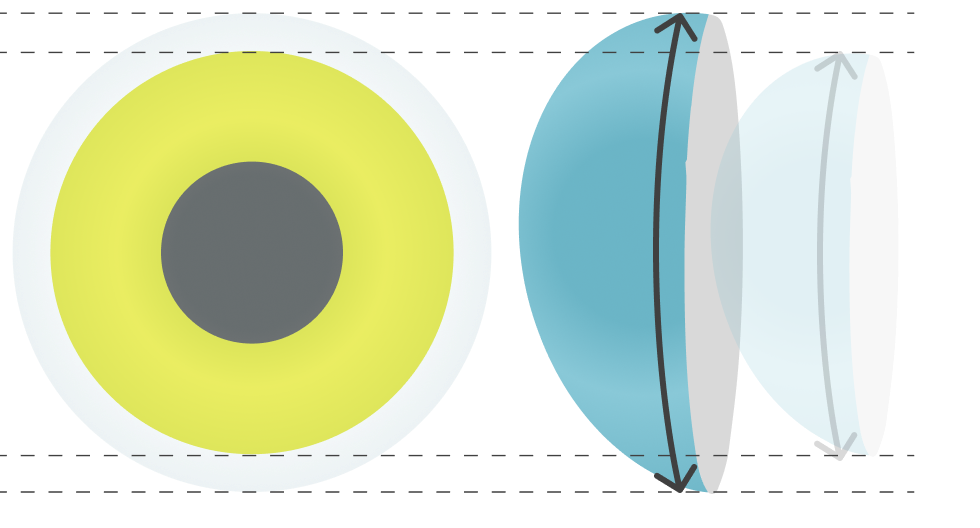
ScleraFlex
An exceptional scleral contact lens designed to provide a comfortable fit for any cornea. ScleraFlex offers a seamless fitting process, ensuring ease of use for both practitioners and patients. ScleraFlex incorporates high-quality materials with optimal oxygen permeability (DK). This ensures the cornea receives the necessary oxygen supply, promoting healthier eyes.
About product
Information
Geometries
With ScleraFlex, initial comfort is prioritized. The lens is carefully crafted to provide excellent comfort from the moment it is inserted, ensuring a smooth transition for patients.
Corneal clearance, a crucial aspect of optimal contact lens fitting, is successfully attained with the appropriate sag parameter. By precisely selecting the sag parameter, the contact lens achieves the ideal curvature to provide a comfortable and secure fit on the cornea.
The scleral landing zone, a critical component of scleral contact lens fitting, is custom-tailored using the Edgelift and Asymmetry parameters. By precisely adjusting the Edgelift, the contact lens achieves an optimal fit and alignment on the sclera, ensuring both comfort and stability.
When fitting an oblate cornea, the ability to customize the shape of the central curve by adjusting the sphere parameter is a valuable tool. It allows for a personalized and optimized fit, enhancing both comfort and visual performance. Experience the benefits of a contact lens that is specifically designed to address the unique requirements of an oblate cornea, providing a comfortable and precise solution for your needs.
Parameters
Materials
ScleraFlex, offers a range of high-Dk materials to suit individual preferences and needs. Choose from the following options: Optimum Infinite, Optimum Extra, and Boston XO..
